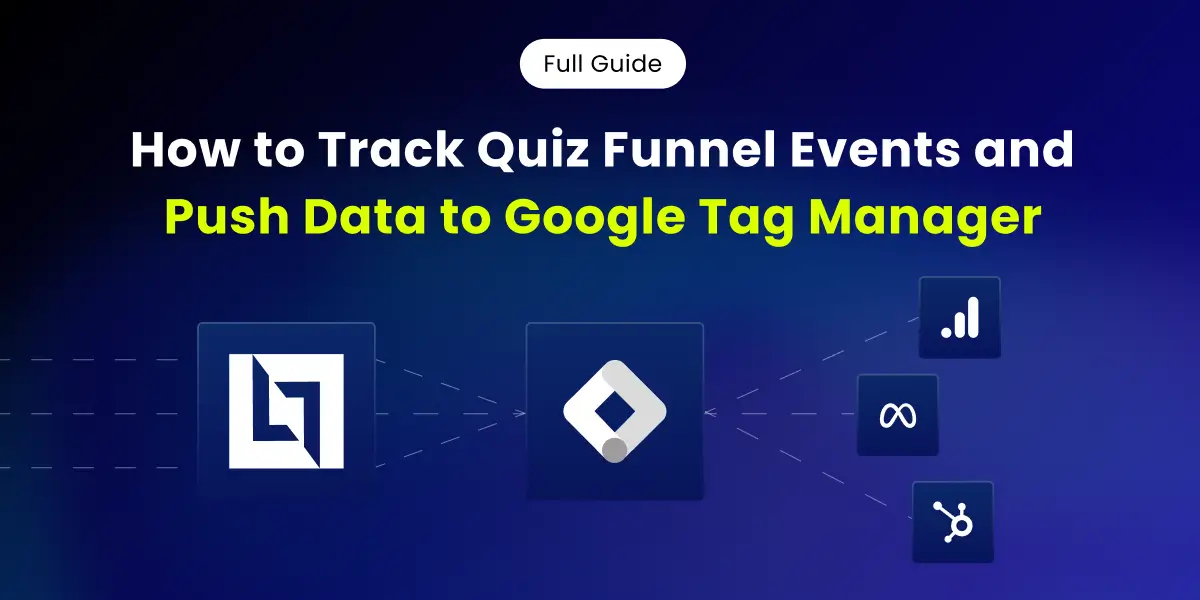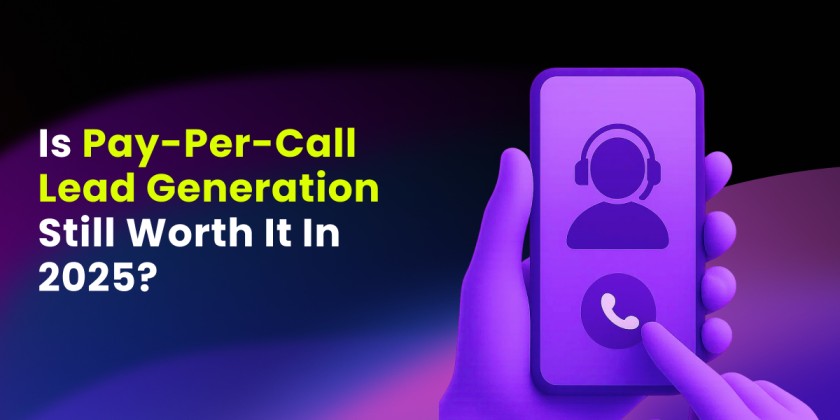Social media benefits affiliate marketing by providing access to billions of users across demographics and enabling personal connections that build trust. But what if you lack followers or can’t advertise certain products on these platforms?
That’s where Affiliate Marketing Without Social Media comes in. You can still thrive without relying on social networks. Many successful affiliate marketers focus on sustainable, long-term strategies instead. This guide covers proven methods to earn affiliate income without social platforms. The key is patience and consistency.
Jump to Section:
🚀 KEY TAKEAWAYS
- Blogging creates lasting value – Niche websites generate passive organic traffic for years, unlike disappearing social media posts. Blog content works 24/7, building authority and creating a valuable business asset you can eventually sell.
- YouTube offers superior engagement – Videos create deeper audience connections through visual demonstrations. With 2.5 billion users and long-term content discoverability, YouTube provides exceptional affiliate success potential without algorithm dependencies.
- Influencer partnerships leverage established trust – Collaborating with influencers gives immediate access to engaged audiences without building your own following, shortening your path to conversions by tapping into pre-built credibility.
- Email marketing offers unmatched ROI – With direct audience access, superior conversion rates, and complete control over messaging, email remains one of the most powerful affiliate marketing tools. Prioritize building your list for long-term success.
- Paid advertising accelerates growth – When you need faster results, targeted paid campaigns deliver immediate visibility and conversions, complementing organic strategies and allowing efficient scaling once you find profitable approaches.
1. Start A Blog or Niche Website
Starting a blog is still one of the most effective long-term strategies for affiliate marketing success. According to HubSpot, typically 47% of buyers consume 3-5 pieces of content before making a purchase decision, so you can leverage this.
Additionally, consumers now expect brands to create valuable content. This changing behavior makes having a dedicated website even more crucial for affiliate marketing to work.
Here are some more stats on creating blog niche websites that might convince you:
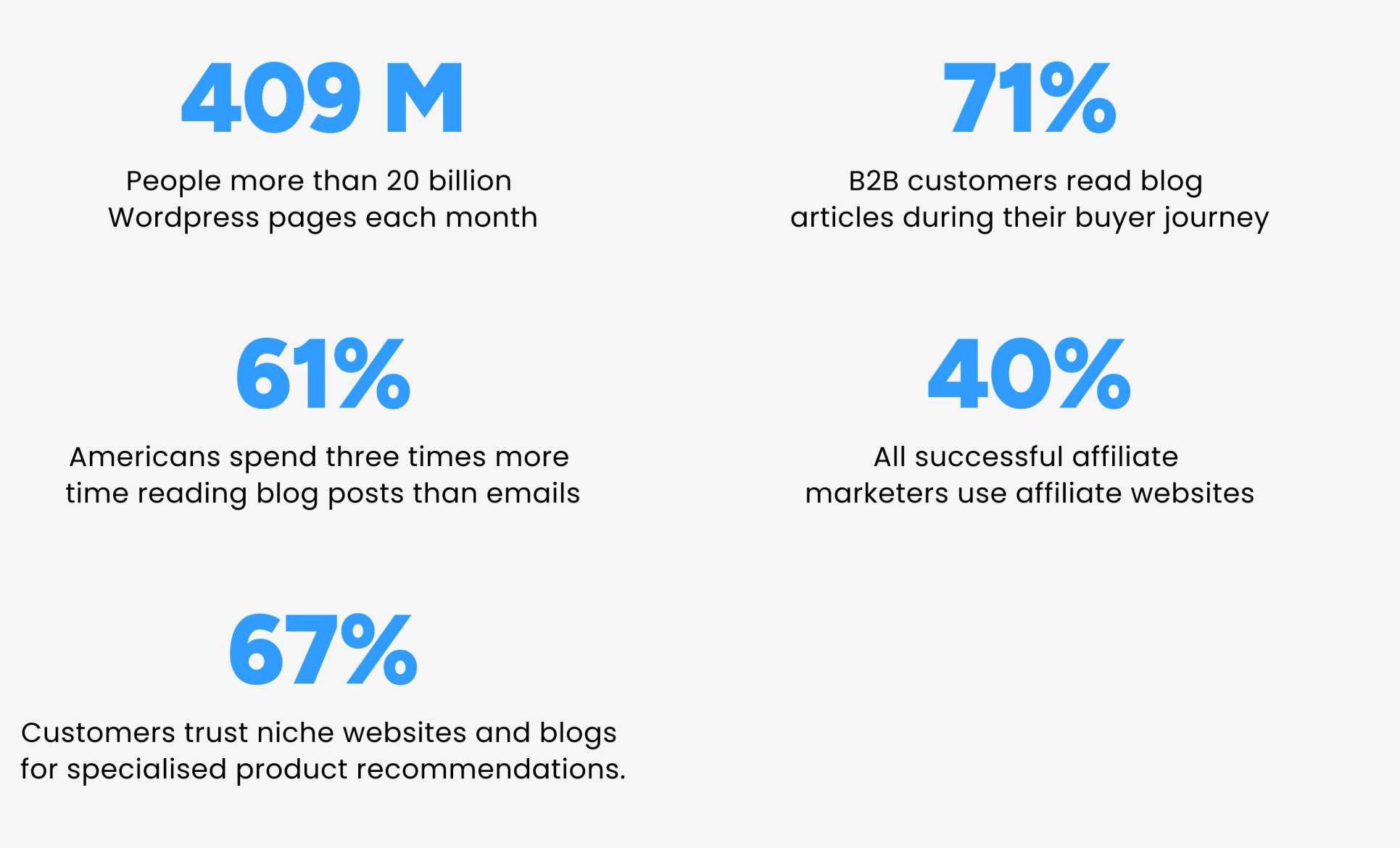
Unlike social media platforms, where content quickly disappears in feeds, blog content can continue generating organic traffic and revenue for years after publication.
This approach offers several distinct advantages:
- Complete creative control over your content and strategy
- Enhanced credibility as an authoritative source in your niche
- Sustainable ROI from evergreen content that remains relevant
- Building a valuable affiliate website that you can eventually sell for a significant sum
Establishing a successful affiliate marketing website requires substantial time and effort—often months, or even years. However, it will yield long-term benefits that make it well worth the investment.
It’s a self-sustaining traffic engine, one that doesn’t rely on algorithm changes or platform policies, built upon the growth of your content library and improvement in search engine rankings.
Structure of a High-Quality Conversion-Oriented Niche Website
To get started, you need to know the important elements of a website article or a blog post. The difference between mediocre and exceptional affiliate content often comes down to these principles:
Prioritize Value Over Sales
Provide genuine help and information before introducing affiliate products. Readers who perceive your content as valuable are more likely to trust your recommendations and make affiliate sales.
In short, don’t be overly promotional. Readers see that from a mile away, and that’s a huge turn-off.
Seamless Link Integration
Incorporate affiliate links naturally within the flow of your content.
Effective placements include:
- Following detailed product explanations
- Within bulleted feature lists
- After addressing specific pain points
- In conclusion, sections as logical next steps
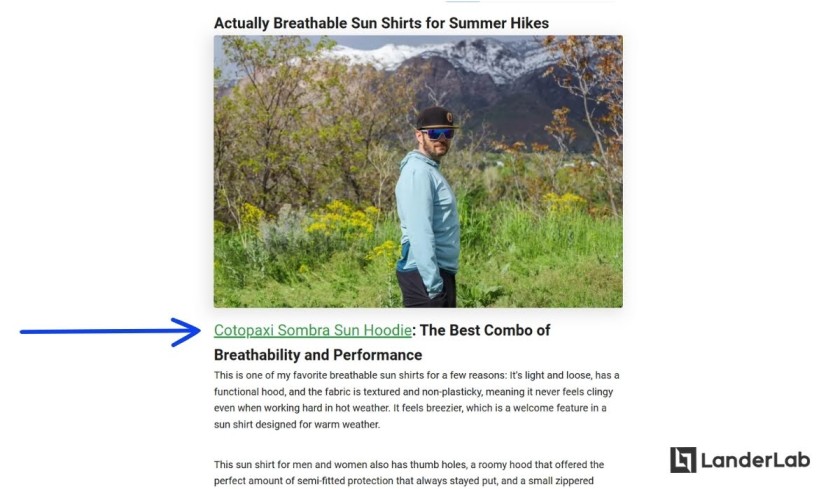
Compelling Calls to Action
Craft CTA phrases that communicate the benefit of clicking rather than simply directing readers to “Buy now” or “Click here.”
Transparency and Authenticity
Always disclose your affiliate relationships and maintain complete honesty about products—including potential drawbacks. This transparency builds long-term credibility that’s essential for a successful affiliate marketer.
Besides, it’s a requirement now, if you want to receive organic traffic from search engines.
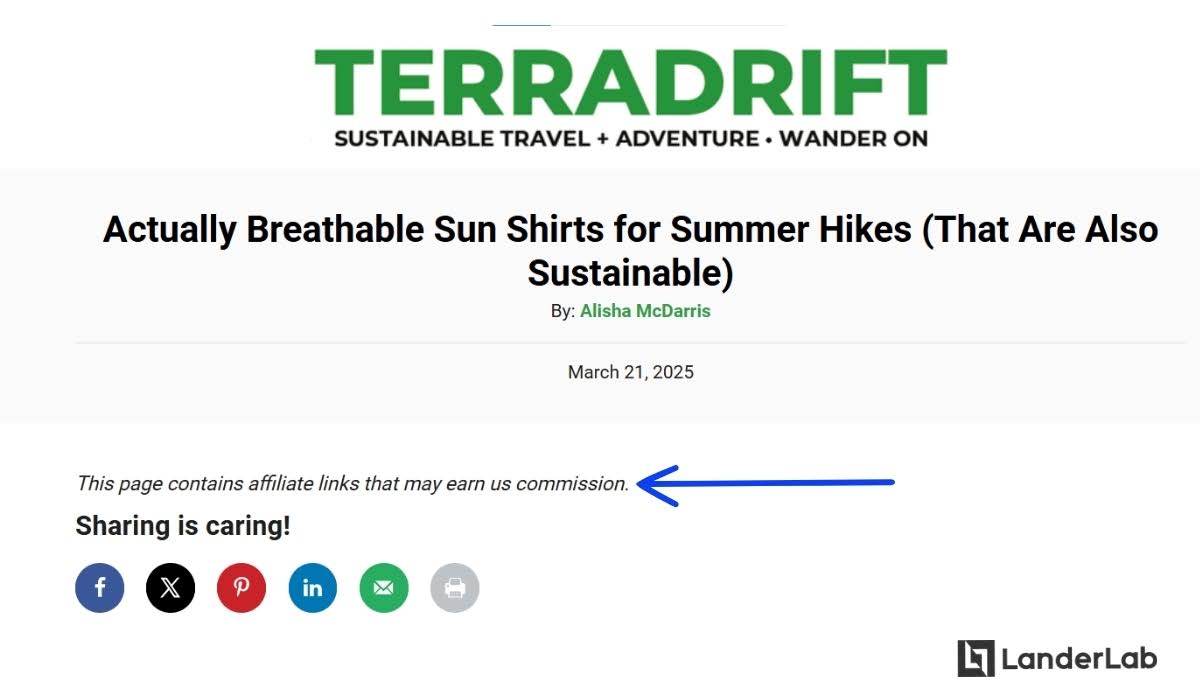
Production Quality
Invest in high-quality content creation, professional images, and clean formatting.
Consider using tools like:
- Semrush for keyword and content suggestions
- Grammarly for proofreading and polishing
- SurferSEO for creating SEO-optimized content
- Canva for custom graphics and visuals
Types of Blog Content
Certain content types consistently perform well for affiliate marketing business. Some of them are:
- Product Roundups: These comparative articles (e.g., Best Budget Gaming Laptops 2025, Interesting Gadgets of 2025, etc.) allow you to showcase multiple affiliate products simultaneously. They typically attract potential buyers already in the buying journey’s consideration phase.
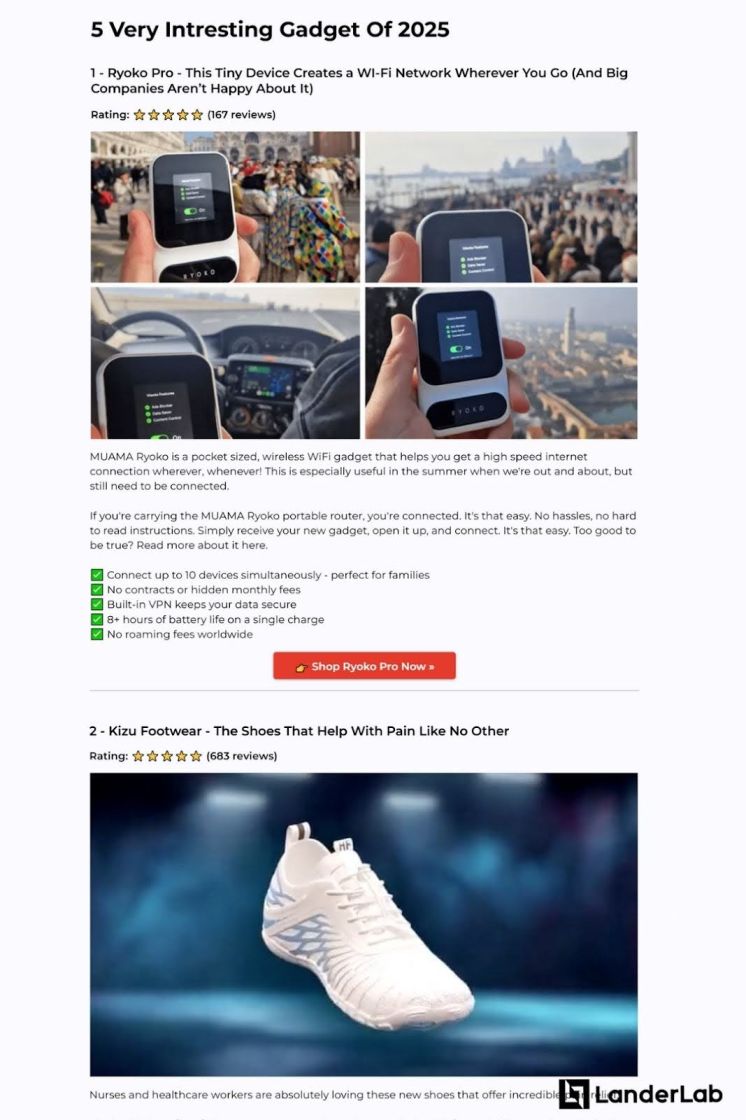
- In-Depth Product Reviews: Detailed examinations of specific products on your affiliate website help build credibility through thorough analysis. The most effective reviews balance objective assessment with personal experience, including pros and cons. This works best for those already in the decision-phase of the marketing funnel.
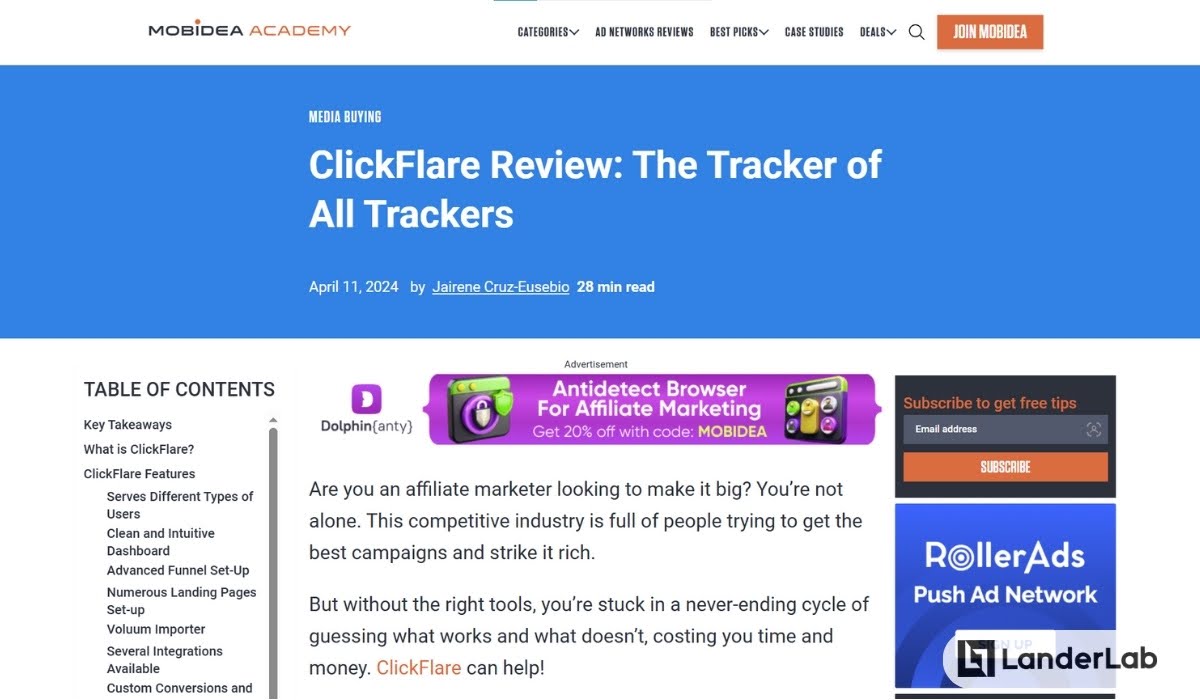
- Problem-Solving How-to Guides: These tutorials address your audience’s specific challenges (e.g., “How to Set Up a Home Recording Studio on a Budget”). You can add affiliate links naturally as part of the solution, or you can lead the visitor to a buying guide or a review of the product or service you are promoting to further influence their buying decision.
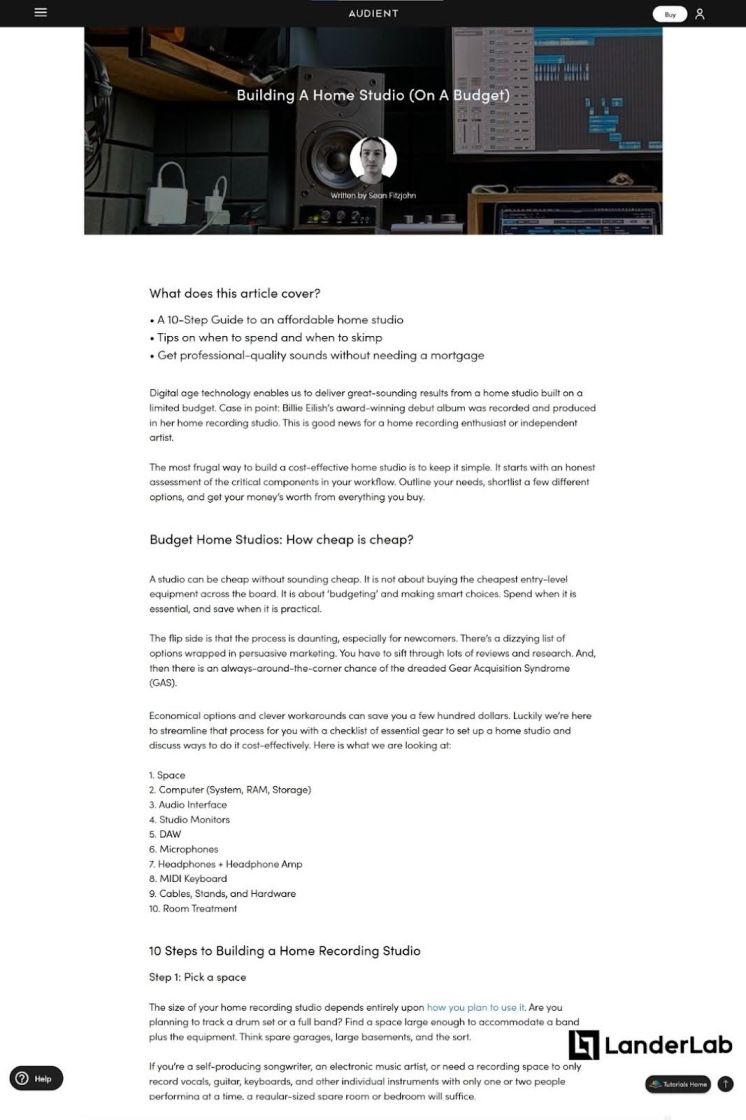
- Buyer’s Guides: Comprehensive resources that educate consumers about important considerations before purchasing (e.g., “Complete Guide to Choosing the Right Running Shoes”). These guides build trust through education rather than direct selling.
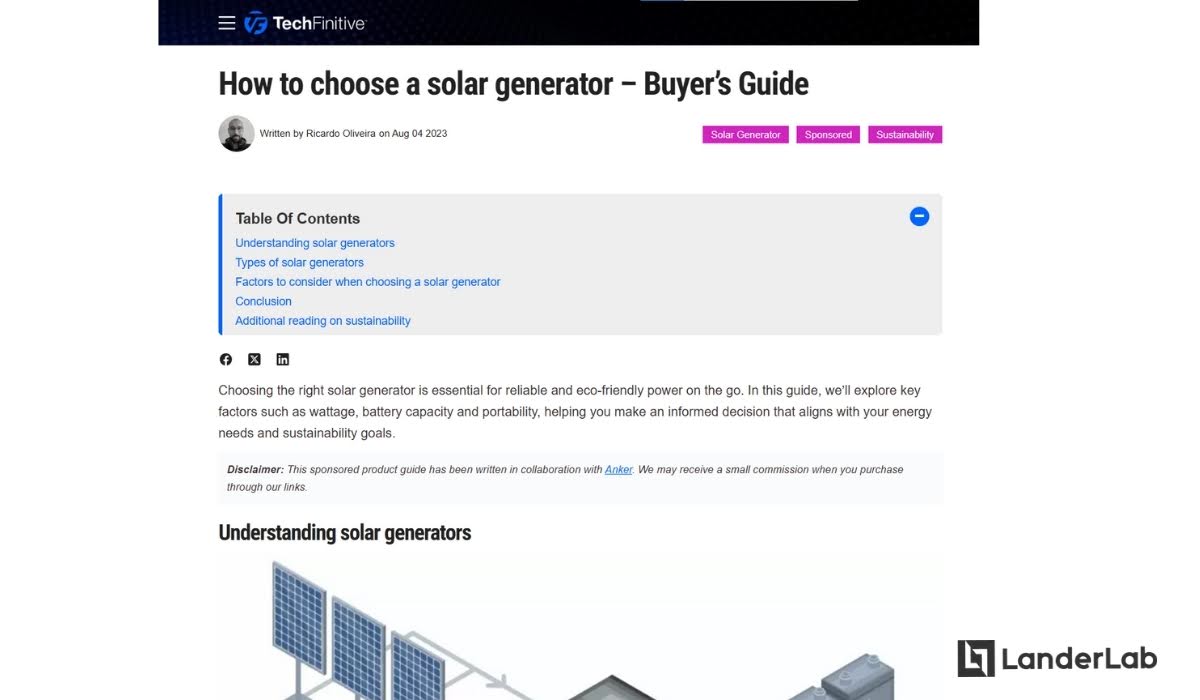
Obviously, this is not a full list. There tons of other affiliate pages you can use. Check our full guide on How to Create the Perfect Affiliate Marketing Landing Page for more information on how you can make these.
The key to creating landing pages like these without worrying too much about setting them up and formatting them to your liking is by using an adept landing page builder like LanderLab.
LanderLab has more than a hundred landing page templates specifically designed for affiliate marketing. You can even make a fully-functional blog or microsite in a matter of minutes.
Build Affiliate Pages That Convert
Ready to grow without worrying about followers or platforms? Use LanderLab to launch high-converting landing pages with no coding experience.
SEO Tips: Your Traffic Engine
For your content to perform well in search engines and attract free traffic, follow these essential search engine optimization practices:
Strategic Keyword Research
Utilize tools (like Google’s Keyword Planner) to identify high-potential search terms in your niche. Look specifically for keywords with:
- Reasonable search volume
- Manageable competition levels
- Clear purchase intent
- Relevance to your affiliate products
Content Optimization
When creating articles, pay careful attention to:
- Compelling, keyword-rich titles and headers
- Well-crafted meta descriptions that encourage clicks
- Logical content structure with proper heading hierarchy
- Strategic keyword placement throughout the text
- Comprehensive coverage of the topic
- An engaging, conversational writing style
Technical SEO Elements
Ensure your affiliate site provides an optimal user experience through:
- Fast loading speeds
- Mobile-friendly design
- Secure browsing (HTTPS)
- Intuitive navigation
- Minimal intrusive elements
Alternative Traffic Strategies Beyond SEO
While search engine optimization forms the foundation of a successful affiliate blog, the reality is that it can take a while to bring you the traffic you expect. As such, supplementing with other traffic sources can create a more resilient business.
Here are other strategies you can apply to generate traffic for your blog or microsite:
Parasite SEO Strategy
“Parasite SEO” involves leveraging high-authority websites by contributing guest content that links to your affiliate offers. This approach accelerates visibility by piggybacking on established sites’ domain authority and existing traffic.
When implementing this strategy:
- Identify reputable publications in your niche that accept guest contributions
- Create exceptionally valuable content that meets their quality standards
- Include contextual links back to your most relevant content
- Build relationships with editors for ongoing opportunities
- Monitor performance to assess ROI compared to contribution costs
While many premium publications now charge for placements, the potential traffic and authority boost often justify the investment, particularly for competitive niches.
Community Engagement
Actively articipating in niche online communities helps you understand your target audience better, establish expertise through helpful contributions, drive traffic to your own platforms, and build valuable relationships with potential collaborators.
These connections often lead to partnerships and growth opportunities over time.
To leverage communities effectively:
- Focus on providing value before promotion
- Develop a recognizable profile and consistent presence
- Address specific questions with thorough, helpful responses
- Share insights from your own experience rather than generic advice
- Include subtle references to your content when directly relevant
The ultimate advantage of the blog-based approach to affiliate marketing without social media is creating a valuable business asset. Unlike social media accounts tied to personal identity, a well-optimized affiliate website can be sold for a significant multiple—typically 20-50 times the monthly revenue.
By focusing on sustainable SEO practices, quality content creation, and diversified traffic sources, you’re not just building affiliate income—you’re building equity. This equity can eventually provide substantial returns through a strategic exit when you’re ready to move on to new ventures.
2. Launch a YouTube Channel
YouTube is an exceptional video-centric platform with over 2.5 billion monthly active users. It offers advantages for affiliate marketing success that traditional social networks simply cannot match.

This video platform allows you to build an audience your own way, establish your presence, and become a topic authority in various niches—even if you start completely from scratch. What’s more, it can help you earn affiliate income consistently over time.
Selecting Your Niche
Before creating your first video, carefully define your YouTube channel’s focus. The most successful affiliate marketers on YouTube target specific niches where:
- There’s genuine audience interest and search volume
- Products have competitive commission structures
- You can provide unique expertise or perspective
- There’s adequate competition, but not overwhelming
Instead of competing in the larger categories, consider carving your spot in specialized sub-niches where you can become the definitive resource for a specific audience. This targeted approach accelerates authority-building and audience growth.
High-Performing Video Styles
Certain types of YouTube videos consistently perform well for affiliate marketing work:
- Product Review videos: In-depth, honest assessments of products within your niche. The most effective reviews combine personal experience with objective analysis, highlighting strengths and limitations to gain viewer trust.
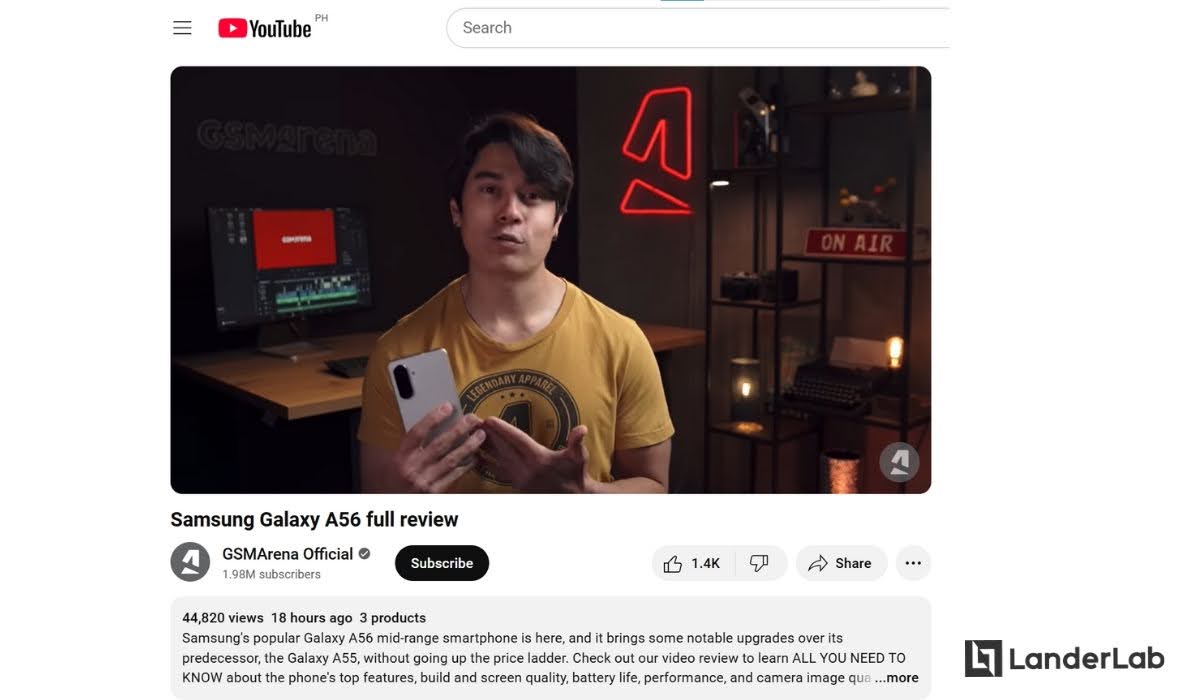
- Comparison Videos: Side-by-side evaluations of similar products (e.g., “Budget vs. Premium Smart Phones”). They attract conversion-friendly viewers who are actively deciding between purchase options.
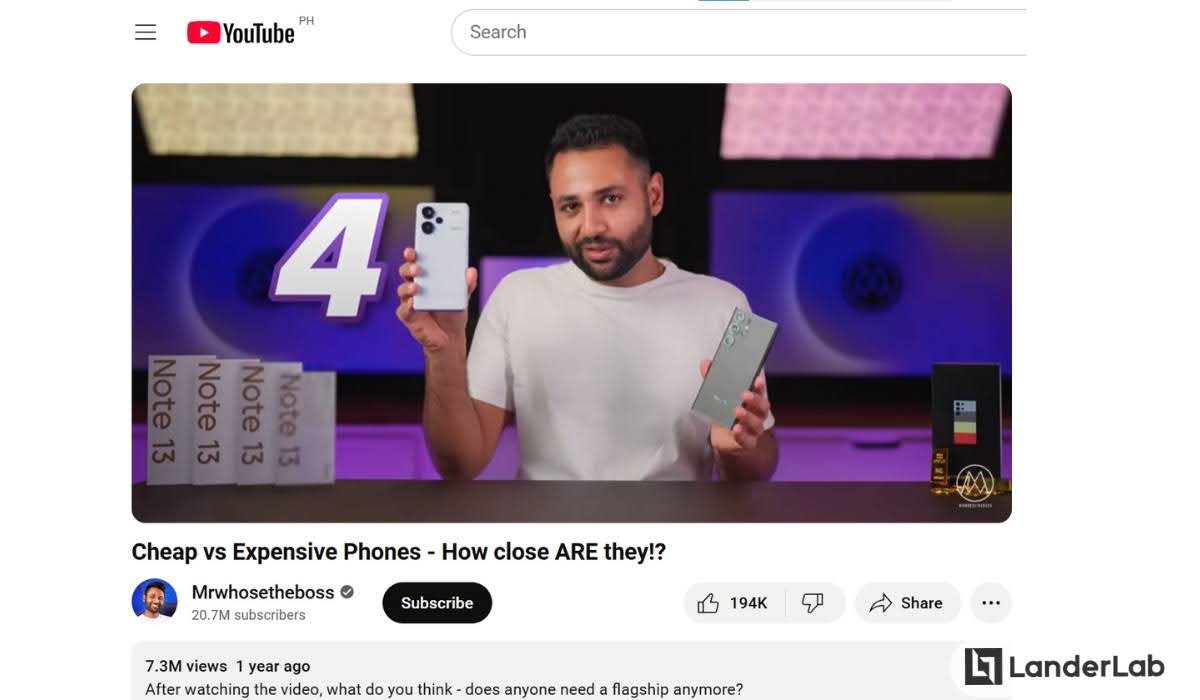
- Tutorial and How-To Content: Step-by-step guides that solve specific problems while naturally incorporating relevant affiliate products. For example, “How to Set Up an Online Store for Under $500” or “I Built a Brand for Less than $500” can seamlessly integrate affiliate links on the description box for each recommended component.

- Buying Guide Videos: Comprehensive videos that educate viewers about important factors to consider pre-purchase (e.g., “What to Look for When Setting Up a Home Studio”).
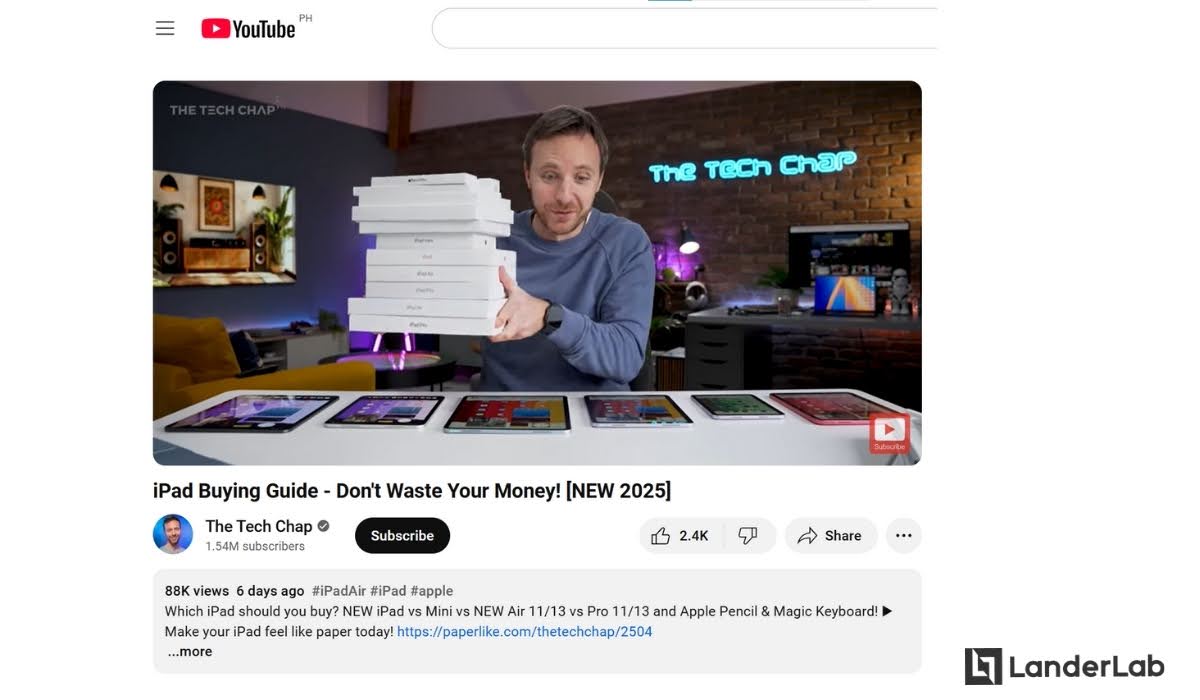
- Unboxing Videos: Authentic first impressions that capture the excitement of opening and discovering new products. These videos satisfy viewers’ curiosity and showcase products in real-world settings.
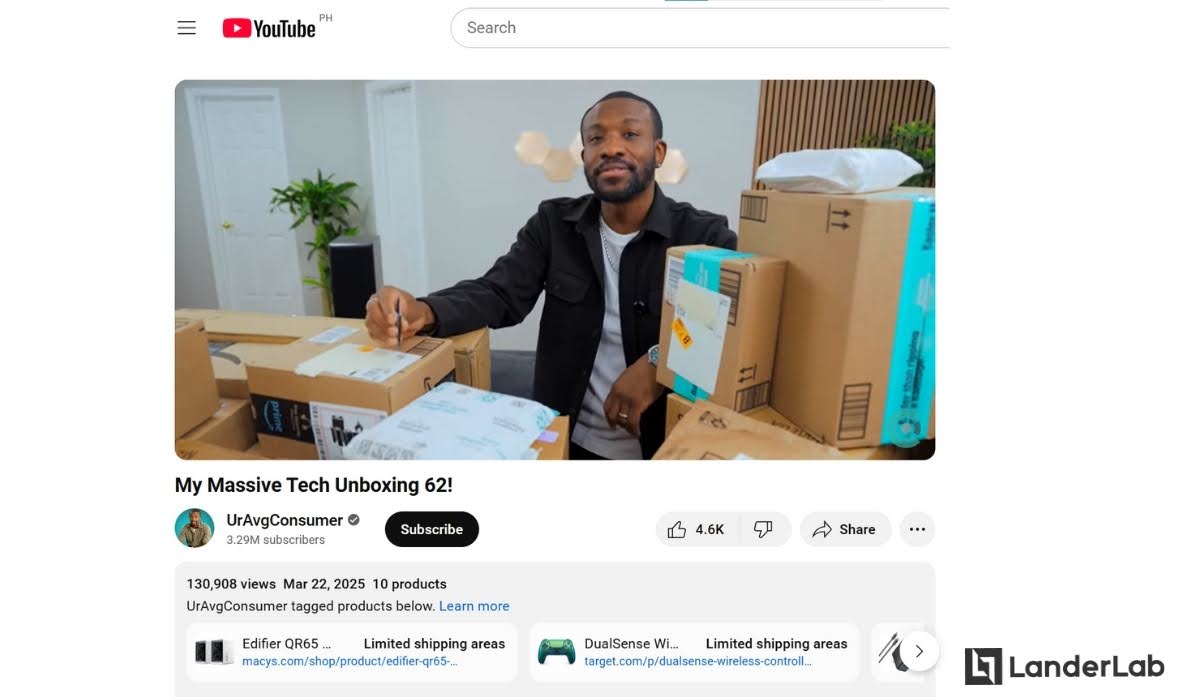
Effective Link Strategies
To maximize conversion potential, practice effective affiliate integration in your videos.
Strategic Link Placement
Position your affiliate links where they’re most accessible and contextually relevant:
- Prominently in video descriptions (particularly at the top)
- Pinned in comments for easy visibility
- Referenced verbally at key moments in your videos
- Included in end screens and cards when appropriate
Transparent Disclosure
Always clearly disclose affiliate relationships both verbally in videos and in written form in descriptions. This transparency builds trust and complies with FTC guidelines.
Link Organization
To improve user experience, organize affiliate links logically with headers, bullet points, or timestamps for videos featuring multiple products.
Custom Link Creation
Use link-shortening tools like Rebrandly or your affiliate network’s dashboard to create clean, trackable links that outperform raw affiliate URLs.
Unlike temporary social media content, YouTube videos can generate views and affiliate conversions for years, creating passive income. Successful affiliate marketers prioritize delivering value to build audience trust before making product recommendations.
3. Work with Influencers
Affiliate marketers can bypass building personal social media followings by partnering with established influencers, accessing engaged audiences immediately rather than spending months developing a following.
Today’s influencer landscape features niche content creators with highly engaged followers. Use this as a top-of-funnel strategy, directing traffic to your affiliate site where you can warm leads before requesting information or pushing sales.
Identifying Ideal Influencer Partners
The success of your influencer collaborations depends heavily on partnering with creators whose audiences match the target audience for your affiliate products. This requires thoughtful research and strategic assessment.
Beyond Traditional Social Media Influencers
While Facebook and Instagram creators might come to mind first, effective influencer partnerships extend to various platforms and content formats:
- Email newsletter curators with highly engaged subscriber bases
- Podcast hosts whose listeners develop strong relationships with them
- Bloggers and affiliate site owners with established domain authority and organic traffic
- Online community moderators who manage active forums or membership sites
- Webinar and virtual event hosts who regularly connect with live audiences
The most valuable influencers often maintain multiple channels, creating opportunities for integrated, multi-touch ad campaigns to promote affiliate offers you represent.
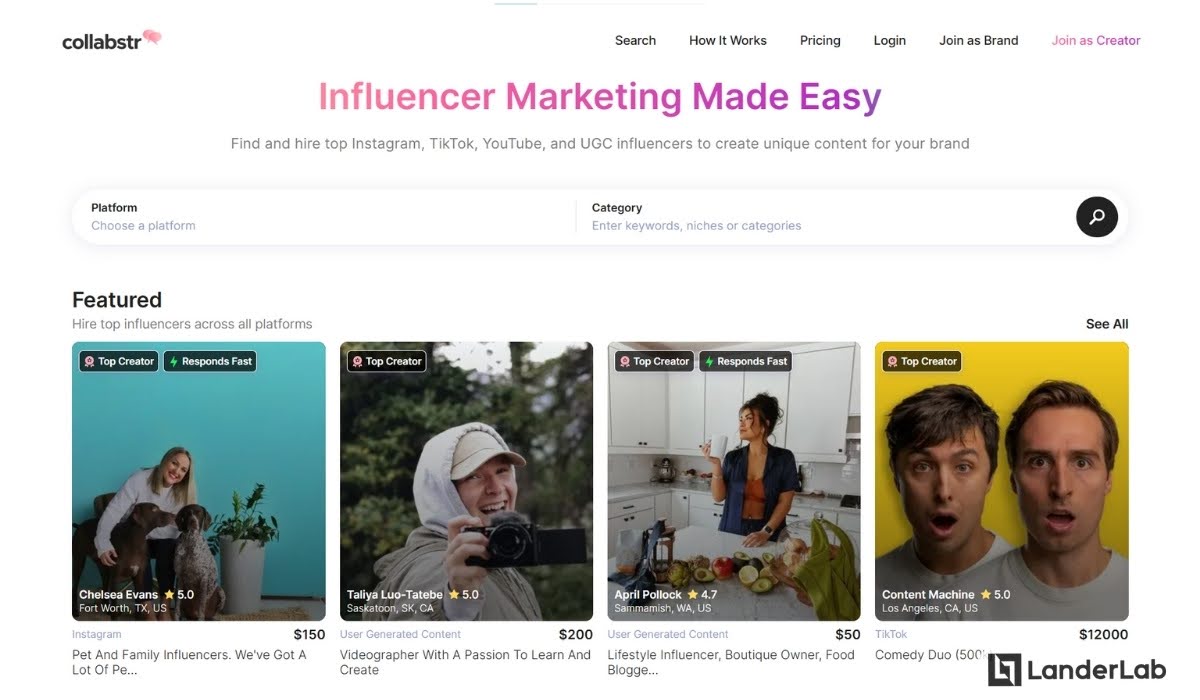
Developing Collaborative Partnerships
Rather than approaching influencers with rigid campaign ideas, develop relationships that provide mutual value. As an affiliate, you bring product knowledge, commission opportunities, and potentially exclusive offers to the table.
Resources to Offer Influencer Partners
To make the collaboration attractive and seamless, prepare these resources:
- Your affiliate links with proper tracking (or sub-affiliate links if the program allows)
- Media kits and key product information you’ve gathered or created
- Demonstration access to products or services (request this from merchants if needed)
- FAQ document addressing common questions about the products
- Sample content ideas that can be adapted to their style
- Testimonials and case studies from your own experience with the products
Platform-Specific Promotion Opportunities
Based on the influencer’s platform, consider suggesting these high-converting formats:
YouTube Opportunities
- Dedicated review videos featuring your affiliate offers
- “Best of” roundups, including products you’re affiliated with
- Tutorial integration with natural product placement
- Unboxing experiences with authentic first impressions
- Challenge or transformation content demonstrating results
Podcast Possibilities
- Cross-promoting your podcast (you advertise each other’s shows)
- Interview episodes discussing problems the affiliate products solve
- Listener Q&A addressing relevant questions with solutions you promote
- Case study discussions exploring successful implementations
- Integrated ad reads featuring personalized promotion
- Exclusive listener offers with your affiliate tracking
Guest Blogging Opportunities
You can be the one providing an article to the influencer as a guest blog post. Here’s what you can give them:
- In-depth product reviews
- Problem-solution articles featuring affiliate products
- Resource roundups, including your recommended tools
- Case studies showcasing results from products you promote
- Comparison posts evaluating different affiliate products
- Tutorial content with contextual product placement
Structuring Mutually Beneficial Arrangements
As an affiliate marketer, you have several options for compensating influencers:
- Commission splitting: Share a percentage of your affiliate earnings from their referrals
- Flat fee: Offer a one-time payment for being featured
- Flat fee plus commission: Offer a guaranteed payment plus performance incentives
- Value exchange: Provide content, services, or other non-monetary value in exchange for promotion
- Cross-promotion: Promote their content or services to your audience (if you have one)
Upsides of Working with Influencers
As an affiliate marketer, partnering with these influencers provides several distinct advantages:
- Instant audience: Immediate access to established, targeted audiences that align with your affiliate products
- Established trust: Enhanced credibility by association with trusted voices in your niche
- Diverse content: Exposure to different content formats that might extend beyond your own capabilities
- Authentic product integration: Promotion that feels natural within the influencer’s existing content style
- Easy scaling: Ability to test and scale affiliate promotions across different audience segments
Downsides of Influencer Partnerships for Affiliates
It’s not all roses when working with influencers though. There are a few risks involved:
- Disintermediation risk: Influencers may bypass you and work directly with the brands you’re promoting
- Dependency concerns: Building your business on others’ platforms creates vulnerability
- Unpredictable results: Influencer performance can vary widely and is difficult to guarantee
- Upfront investment: May require significant initial outlay before seeing returns
- Brand alignment challenges: Influencer behavior or other promotions may conflict with your affiliate products
Solutions to Common Challenges
Addressing Partners Trying to Bypass You:
- Use influencer collaborations only on products or services that have strict application requirements or one that you have a direct partnership with.
- Offer unique value that brands don’t provide directly (bundled resources, implementation support, etc.).
- Focus on multi-product promotions rather than single-brand campaigns
- Create proprietary content, tools, or resources that enhance the affiliate products
- Establish formal agreements with influencers including non-circumvention clauses
Reducing Over-Dependence on Influencers for Traffic:
- Diversify across multiple influencers and platforms
- Gradually build your own assets (email list, blog, etc.) alongside influencer partnerships
- Develop direct relationships with affiliate programs’ managers for preferred treatment
- Create systems to capture leads from influencer traffic for your own follow-up
- Focus on building your unique expertise and brand within the niche
Scaling Your Influencer Strategy
Once you’ve established successful partnerships, develop a systematic framework:
- Core Partners: Develop long-term relationships with consistent advocates
- Niche Specialists: Engage subject matter experts for specific product categories
- Content Collaborations: Create co-branded content you can both leverage
- Affiliate Teams: Connect with other affiliates to share influencer relationships and resources
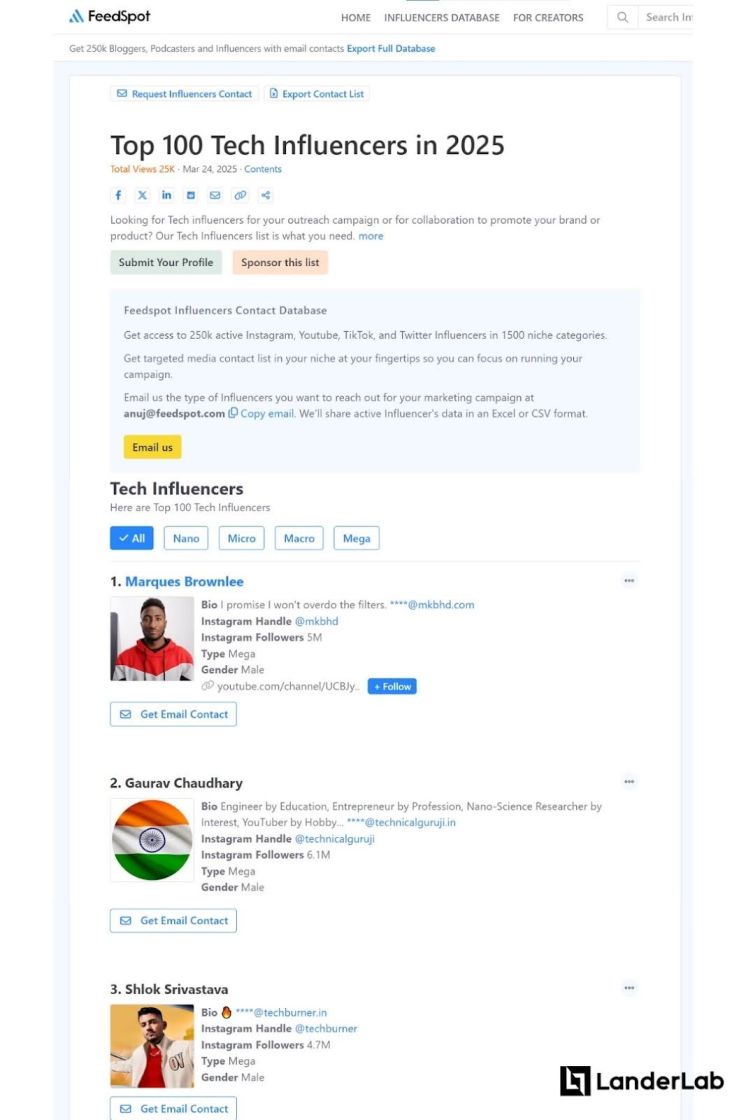
Influencer collaboration gives affiliate marketers without large social media followings a powerful growth strategy. By identifying aligned partners and creating mutually beneficial arrangements, you can leverage established audiences for significant results.
The best marketers treat these partnerships as long-term strategic relationships rather than one-off transactions, creating a sustainable affiliate marketing channel independent of personal social media presence.
4. Use Email Marketing
Social media often dominates the conversation around affiliate marketing strategies, but a more powerful and consistently profitable approach exists that many pro affiliate marketers leverage: email marketing campaigns.
Do you know why affiliate marketers using email marketing earn more? Because the benefits of email marketing for affiliate success extend far beyond just higher earnings.
For those looking to earn affiliate income without depending on ever-changing algorithms, an email list represents something invaluable—a marketing asset you actually own and control.
The Benefits of Email Marketing
While social media platforms constantly change their algorithms and limit organic reach, email marketing offers several significant advantages that remain consistent:
- Direct access to your audience: Emails land directly in subscribers’ inboxes, ensuring visibility without algorithm interference
- Unmatched cost-effectiveness: Beyond the email service cost, reaching 10,000 subscribers costs the same as reaching 100
- Superior trust-building potential: Regular, valuable content nurtures leads, fostering deeper relationships than social media typically allows
- Exceptional ROI: Email marketing consistently delivers one of the highest returns on investment in digital marketing
- Full ownership and control: Unlike social platforms where your account could be suspended or reach limited, you own your email list completely
- Higher conversion rates: Email marketing typically converts better than social media marketing
To build an efficient email list, combine it with traffic sources like SEO, content marketing, or even paid traffic campaigns. While email marketing excels at nurturing and converting prospects, it doesn’t generate new traffic independently.
Email Sequence Architecture
The structure and content of your emails significantly impact your affiliate conversion rates. For maximum effectiveness, create a strategic funnel with these elements:
1. Indoctrination sequence (1-3 emails)
- Welcome new subscribers
- Set expectations about what they’ll receive
- Share your story and establish credibility
- Deliver promised lead magnet
2. Value-building sequence (3-5 emails)
- Provide high-value content related to your niche
- Identify and agitate the problem your affiliate product solves
- Build anticipation for solutions
- Position yourself as a trusted advisor
- Can start adding affiliate links or affiliate codes (with additional value such as discounts)
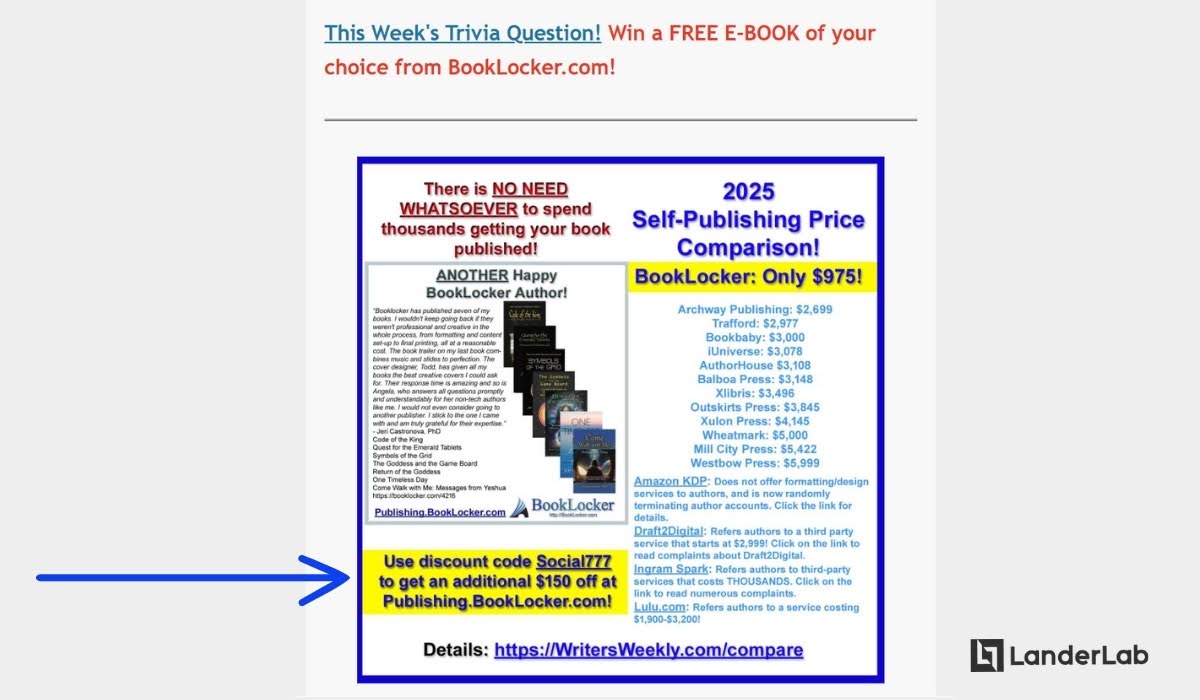
3. Affiliate pre-launch sequence (2-3 emails)
- Introduce the problem in detail
- Share case studies or success stories
- Hint at the solution coming soon
- Address potential objections preemptively
4. Affiliate promotion sequence (3-5 emails)
- Introduce the affiliate product as the solution
- Share specific benefits and features
- Provide honest reviews and comparisons
- Include testimonials and social proof
- Create urgency with limited-time bonuses
5. Last chance sequence (1-2 emails)
- Remind subscribers about closing offers
- Address final objections
- Emphasize scarcity or deadline (urgency)
- Provide reassurance (guarantees, support options)
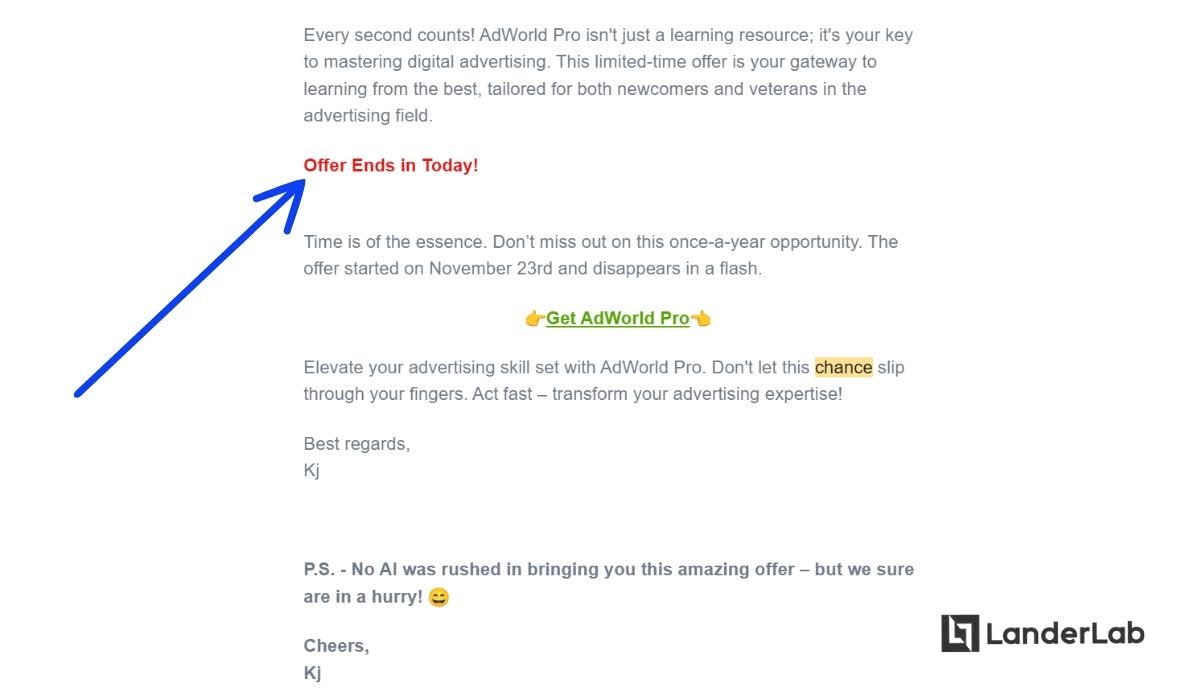
While the last section is called “last chance sequence,” it doesn’t mean you’ll stop sending emails! You have to keep your audience engaged, so make sure you regularly send emails that would keep their interest.
This means going right back to step 2 or 3 of this sequence. However, do not make the mistake of sending the same old email you sent in the past! Send fresh emails even if its for the same goals.
If you have data on open rates, you can segment your email list and resend emails to people who have not opened some of the emails in your sequence.
Email Marketing Best Practices for Affiliates
Email Frequency and Timing
Finding the right cadence for your email campaigns can significantly impact engagement and conversion rates.
For most affiliate marketers, a balanced approach works best: send 4-5 emails per campaign, strategically timed to build interest and create urgency without overwhelming subscribers.
During normal periods, limit your communications to 2-3 emails weekly to maintain presence without causing list fatigue. However, during special promotions or product launches, you can temporarily increase this frequency—just be sure to set proper expectations with your audience.
The optimal sending time varies by audience. Some professionals check emails early morning before work, while others engage during evening hours.
According to Brevo, the best days and times to send an email based on the industry are as follows:
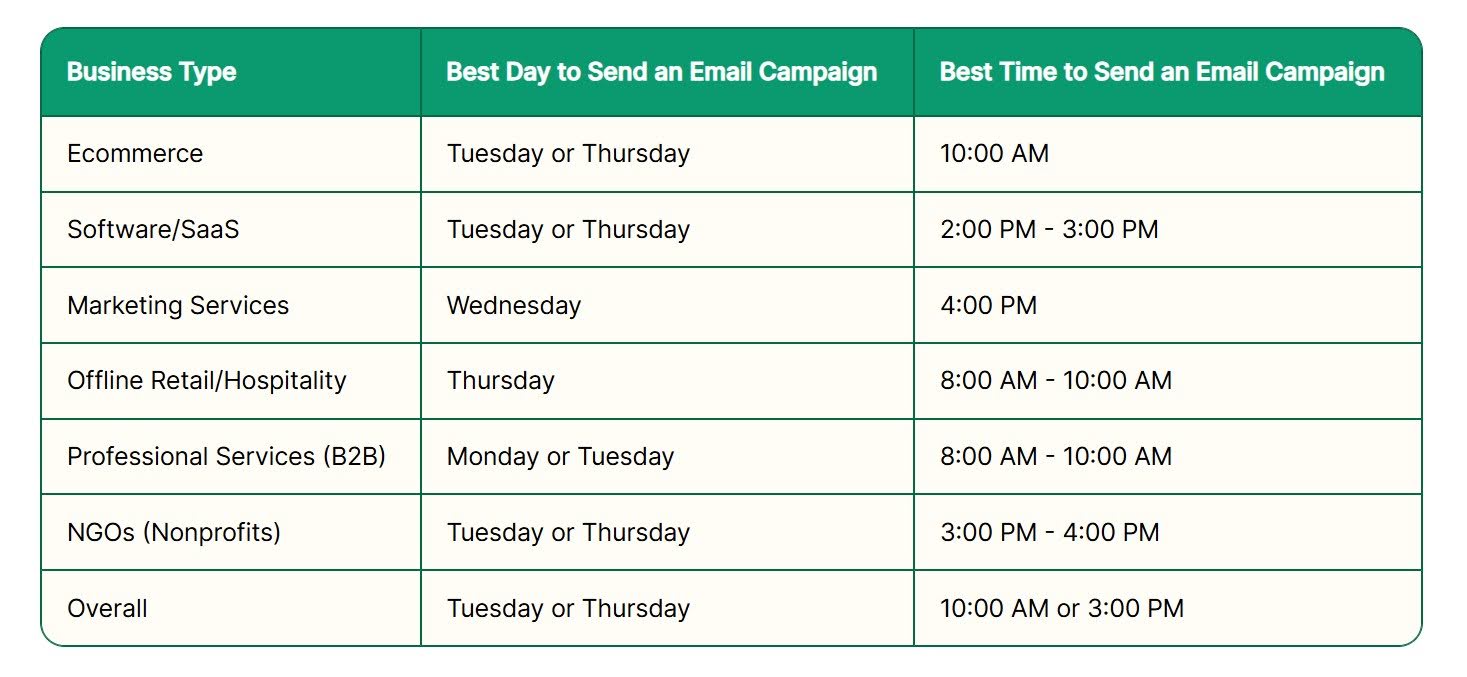
Instead of following generic advice, analyze your own open rates across different time slots and days to identify when your specific audience is most receptive.
Content Strategy for Higher Engagement
Generic email blasts simply don’t perform in today’s crowded inboxes. To stand out, you’ll need a sophisticated content approach:
Tell compelling stories that create emotional connections between your audience and the products you promote. Share your personal experiences, customer journeys, or transformative results that highlight the product’s value.
Balance educational and promotional content using the 80/20 principle—provide valuable information 80% of the time to earn the right to promote the remaining 20%. This builds trust and positions you as an advisor rather than just a seller.
Your email content should take various forms:
- In-depth case studies demonstrating real results
- Engaging Q&A formats addressing common concerns
- Practical how-to guides that incorporate affiliate products
- Thoughtful reviews comparing different solutions
- Curated resource lists featuring your recommended tools
Make every email scannable with strategic formatting. Use descriptive subheadings, concise paragraphs, and occasional bullet points to help busy readers extract value quickly—even when they’re just skimming.
Increase urgency through timely deals and exclusive discounts available only to your subscribers. Always pair these offers with clear, compelling calls-to-action that stand out visually and communicate exactly what action to take.
Segmentation Strategies
One-size-fits-all emails significantly underperform compared to targeted communications. Effective segmentation allows you to deliver more relevant content to different subscriber groups:
Demographic Segmentation
Consider how age, location, gender, and income level affect product relevance and messaging approach. A retirement planning product might require completely different positioning for 30-year-olds versus 55-year-olds.
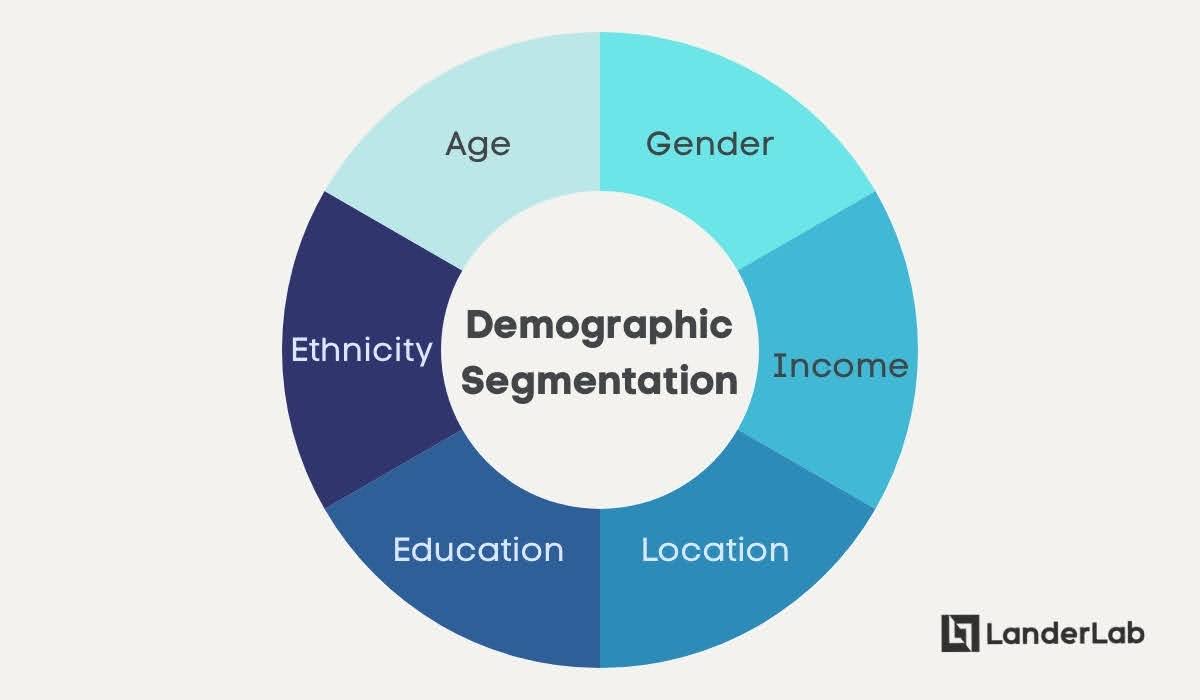
Psychographic Divisions
Go beyond basic demographics to segment based on values, interests, pain points, and goals. Understanding what motivates different segments allows you to craft messages that resonate on a deeper level.
Behavioral Insights
Your subscribers tell you what they care about through their actions. Track metrics like:
- Which products they’ve purchased previously
- Which email topics generate clicks
- What website content they consume
- How frequently they engage with your communications
This behavioral data often provides the most powerful segmentation opportunities.
Acquisition Tracking
The lead magnet or channel that brought someone to your list offers valuable insight into their interests. Someone who joined through a “beginner’s guide” likely needs different content than someone who downloaded an “advanced strategies” report.
Customer Journey Mapping
Recognize where subscribers stand in their journey—from initial awareness to active consideration, purchase decision, and ongoing retention. Each stage requires distinct messaging to move subscribers forward.
Personalization Beyond First Name
Modern email personalization extends far beyond inserting a subscriber’s name. Consider these sophisticated approaches:
- Reference past interactions and purchases
- Recommend products based on browsing history
- Send milestone emails (anniversaries, birthdays)
- Adjust content based on engagement level
- Use dynamic content blocks that change based on subscriber data
Unlike social media followers that can disappear with algorithm changes, your email list is an asset you truly own. Building and nurturing an email subscriber list requires patience and consistency, but the effort pays off in reliable affiliate income over time.
5. Promote Using Paid Ads
Traditional affiliate marketing methods like niche websites, YouTube content, influencer partnerships, and email marketing can be effective but require significant time investment before seeing returns.
Paid advertising offers a faster alternative, with 93% more blogs adopting promotional strategies in recent years. With a modest budget and understanding of ad fundamentals, you can generate traffic and conversions almost immediately.
Understanding Paid Traffic for Affiliate Marketing
Before diving into specific platforms, it’s important to understand what makes paid traffic valuable for affiliate marketing:
- Immediate Visibility: Unlike organic methods that might take months to gain traction, paid traffic allows you to appear in front of your target audience instantly.
- Precise Targeting: Advanced targeting options enable you to reach people based on demographics, interests, behaviors, and even purchase intent.
- Scalability: Once you find profitable campaigns, you can easily scale by increasing your budget or expanding to similar audiences.
- Measurable Results: Paid traffic platforms provide detailed analytics that allow you to track every click, conversion, and dollar spent.
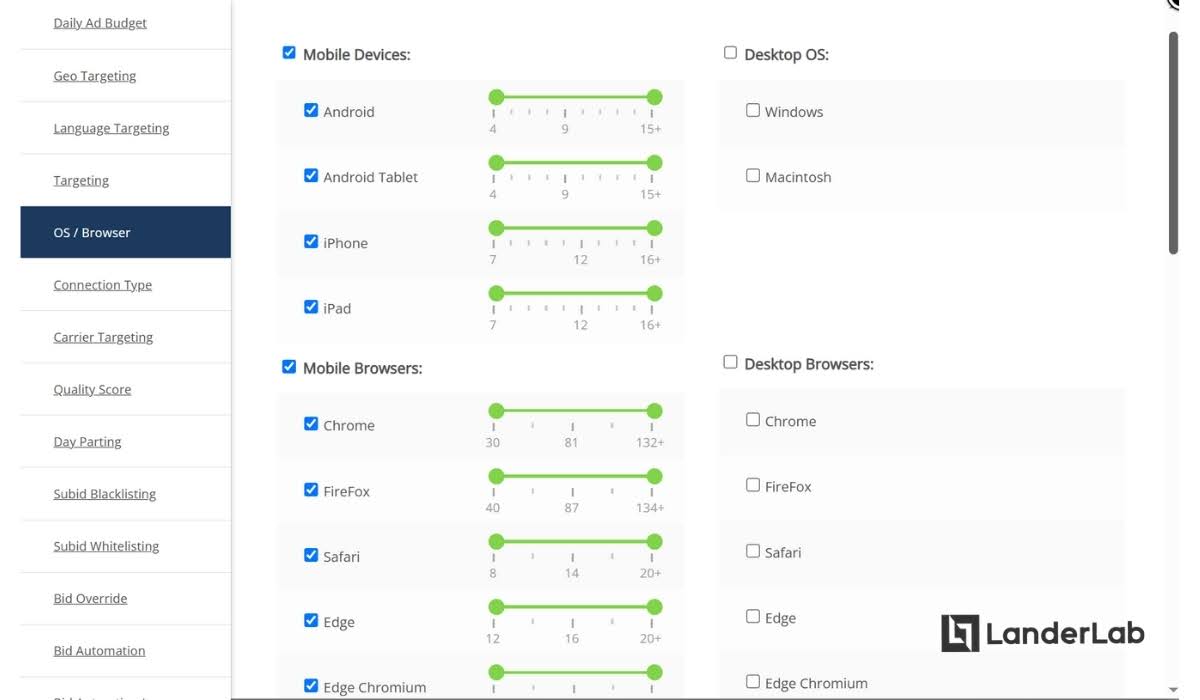
Effective Paid Traffic Channels
The paid advertising landscape offers several powerful channels to promote affiliate products:
Search Engine Marketing (SEM)
Google Ads and Bing Ads allow you to place your offers directly in front of people actively searching for related solutions. This pay-per-click approach ensures you only pay when someone shows interest by clicking your ad.
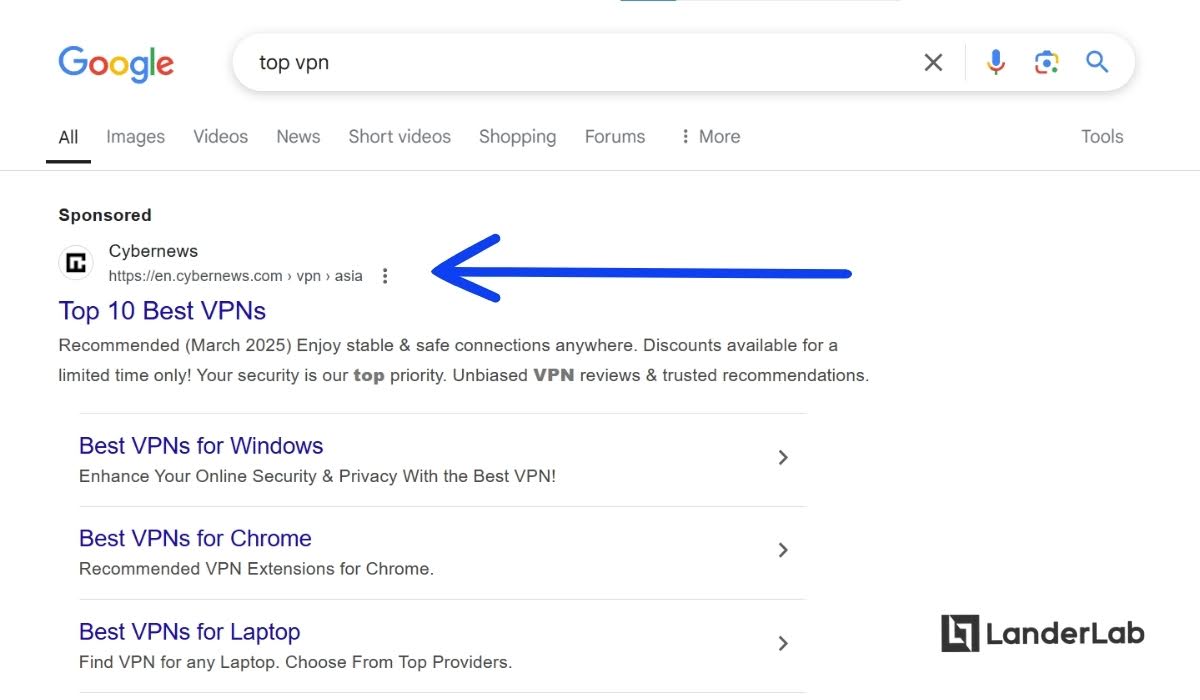
Major networks for SEM are Google Ads, Microsoft Ads, and Yandex Direct.
Budget Expectations: Start with at least $300-500 per month to gather meaningful data. Competitive niches may require $1,000+ monthly for effective testing.
Best Practices for SEM:
- Research keywords with commercial intent (people looking to buy, not just learn)
- Create highly relevant ad copy that addresses the searcher’s specific need
- Use ad extensions to take up more space in search results
- Build dedicated landing pages for each ad group
- Implement negative keywords to prevent irrelevant traffic
Display Advertising
Display networks allow your banner ads to appear across thousands of websites, reaching potential customers even when they’re not actively searching for your solution.
The good news is that more affiliate programs and affiliate networks readily provide banners with affiliate links already embedded in them
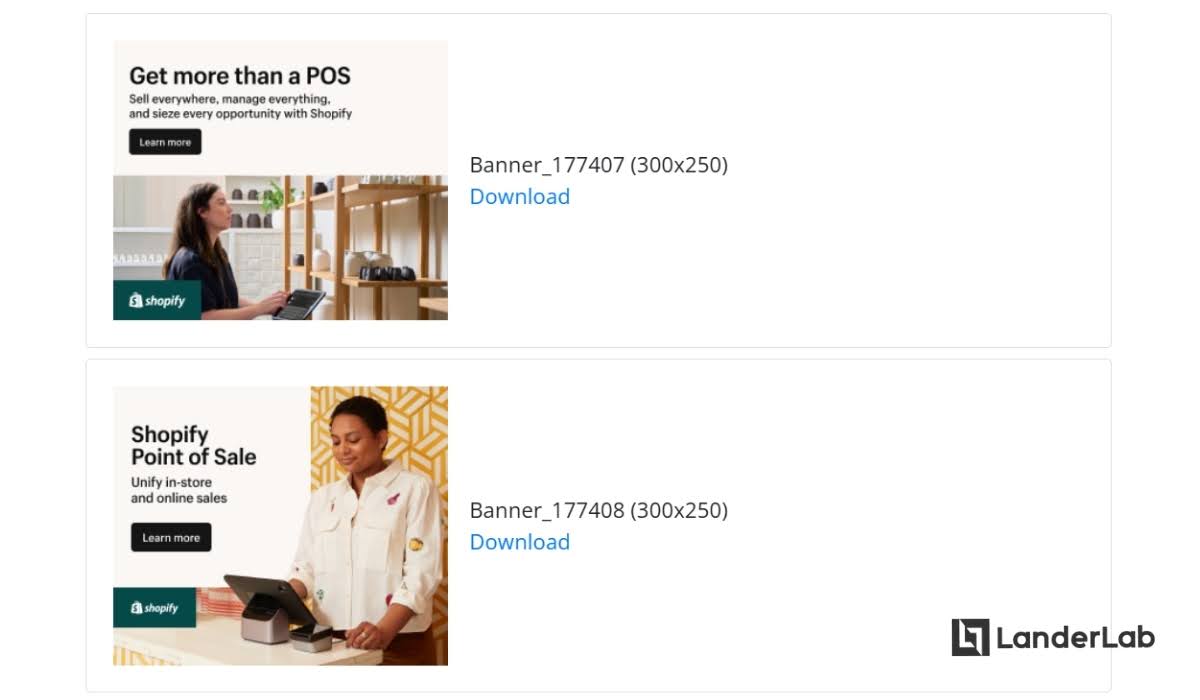
Major networks for Display Advertising include Google Display Network (over 2 million websites), MediaVine, Criteo, and AdRoll.
Budget Expectations: Start with $500-700 monthly, with at least $50 daily for effective testing.
Best Practices for Display:
- Create visually appealing banners in multiple sizes (300×250, 728×90, 160×600)
- Use compelling imagery that captures attention
- Focus on clear value propositions rather than complex messages
- Implement frequency capping to prevent ad fatigue
- Utilize retargeting to reconnect with previous website visitors
Native Advertising
Native ads blend promotional content seamlessly with the surrounding website content, appearing as “recommended articles” or “content you might enjoy” sections on popular sites.

Major networks for Native Ads are Taboola, Outbrain, MGID, Revcontent, and Yahoo Gemini.
Budget Expectations: Most networks require $500-1,000 minimum deposits to start, with daily budgets of $50-100 recommended. However, there are also smaller native ad networks that accept a minimum deposit of $100, which is a great option for testing it out first.
Best Practices for Native:
- Create compelling headlines that generate curiosity
- Use high-quality images that stand out without appearing too promotional
- Build pre-sell landing pages with valuable content before introducing affiliate offers
- Implement story-based marketing approaches
- Start with broad targeting and narrow down based on performance data
Push Notification Advertising
Push notification ads deliver your offers directly to users’ devices as notifications. These ads typically generate high engagement rates since they catch users’ attention regardless of what they’re currently doing online.
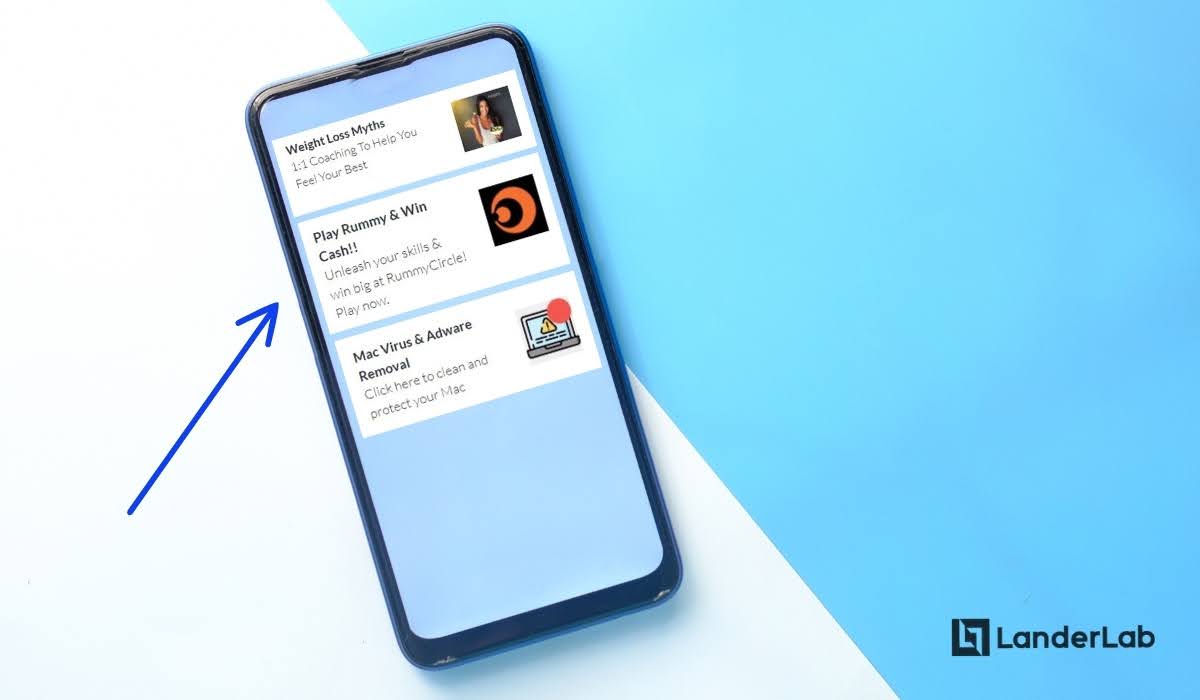
Major networks for push notification ads are PropellerAds, RichAds, Pushground, and MegaPush.
Budget Expectations: Most push networks allow starting with as little as $100, though we’ve seen some go as low as $50. Depending on the affiliate offer you are promoting, you should spend anywhere between $50 and $200 per campaign during initial testing.
Best Practices for Push Notification Ads:
- Create short, compelling messages (under 40 characters for titles)
- Use eye-catching icons that stand out in notification trays
- Focus on urgent or time-sensitive offers to drive immediate action
- Test different delivery times to find optimal engagement windows
- Create a sense of exclusivity or special access
Pay-Per-View (PPV) Advertising
You must have heard the term Pay-per-View before, especially when it comes to sports matches like football championship games and international boxing matches.
When it comes to online advertising though, PPV advertising means ads are delivered through pop-ups, pop-unders, or domain redirects. The advertisers are charged for every view, not for every click.
While sometimes considered intrusive, these formats can be effective for certain affiliate offers, especially when precisely targeted.

Major networks that focus on pop ads and other methods that use PPV ad formats are ZeroPark, Galaksion, HilltopAds, and PopAds.
Budget Expectations: PPV ads are some of the cheapest ads out there so you can start with a very small budget. However, you have to be watchful of your targeting settings and be ready to optimize quickly or your budget will burn out easily.
Start with $20 to $50 for initial testing per campaign.
Best Practices for PPV:
- Create direct, benefit-focused landing pages
- Use attention-grabbing visuals and headlines
- Keep messaging simple and straightforward
- Test different trigger keywords and URLs
- Focus on high-converting offers with broad appeal
Adult Traffic Networks
For appropriate affiliate offers, adult networks can provide high volume at competitive prices, making them a viable option for certain niches.
Major networks for Adult Advertising are TrafficJunky, ExoClick, JuicyAds, TrafficStars, and PlugRush.
Budget Expectations: Same as PPV ads, these ads are some of the most affordable; just make sure to be mindful of your targeting and budget or click limits. You can start with as little as $20 campaign testing budget before you can start optimizing.
Best Practices for Adult Traffic:
- Create appropriate landing pages that match the traffic source
- Focus on offers with natural fit for the audience
- Implement strict targeting to reach relevant segments
- Use explicit but not offensive creative assets
- Test different placements and ad formats
- Comply with all network guidelines regarding content
Quick Tips for Using Paid Ads to Promote Affiliate Programs
Many successful affiliate marketers recommend using a third-party tracking tool when running paid traffic campaigns to properly analyze performance and optimize your spending. Make sure you find one for yourself.
To increase your chances of conversion, use a pre-lander, a.k.a. a landing page. LanderLab has landing page templates that work really well with paid advertising campaigns. They have over a hundred of them falling under various niches.
Launching your first advertising campaign can be scary because you have to spend for ads, but don’t optimize too early just so you can save money. You might end up not receiving traffic or not getting enough data to properly evaluate your ads’ performance.
Finally, make sure you split-test landing pages and ad creatives to find the ones that will give you the best ROI.
Conclusion
Can you start affiliate marketing without social media followers? As we have already proven, you definitely can!
Diversifying your promotional channels is essential for sustainable growth in affiliate marketing without social media. While having your own social media presence is one common approach, you now have several proven methods to promote affiliate products without relying on social platforms.
Remember that affiliate marketing is not a get-rich-quick scheme. It requires dedication, consistent content creation, and a willingness to experiment with different traffic sources. The most successful affiliate marketers combine multiple strategies from this guide, creating diverse income streams that aren’t dependent on any single platform or method.
By implementing the strategies and principles outlined here, you can build a thriving affiliate marketing business and earn commissions even without social media, leveraging the strategic advantages of other platforms—creating a win-win scenario for yourself, your affiliate partners, and the audiences you collectively serve.



